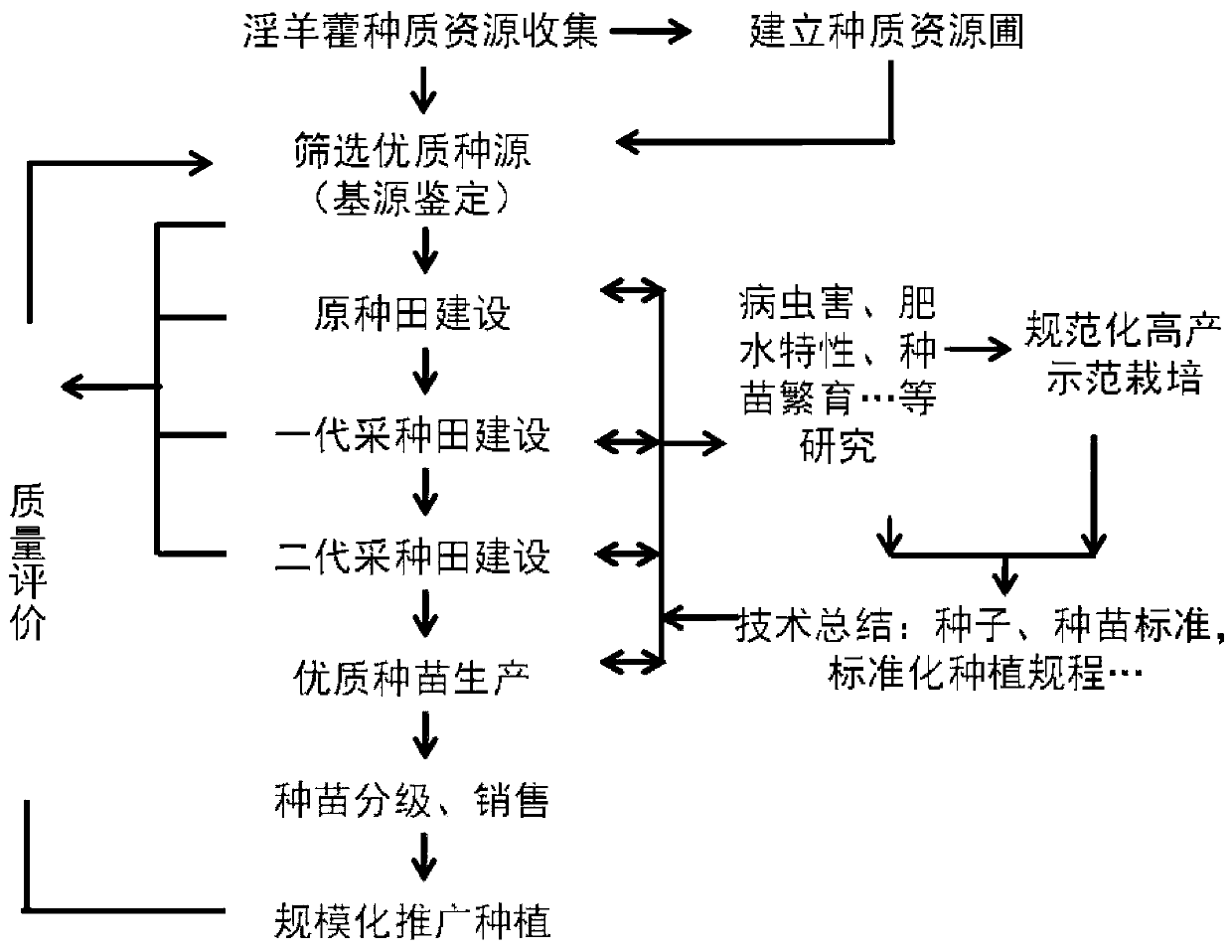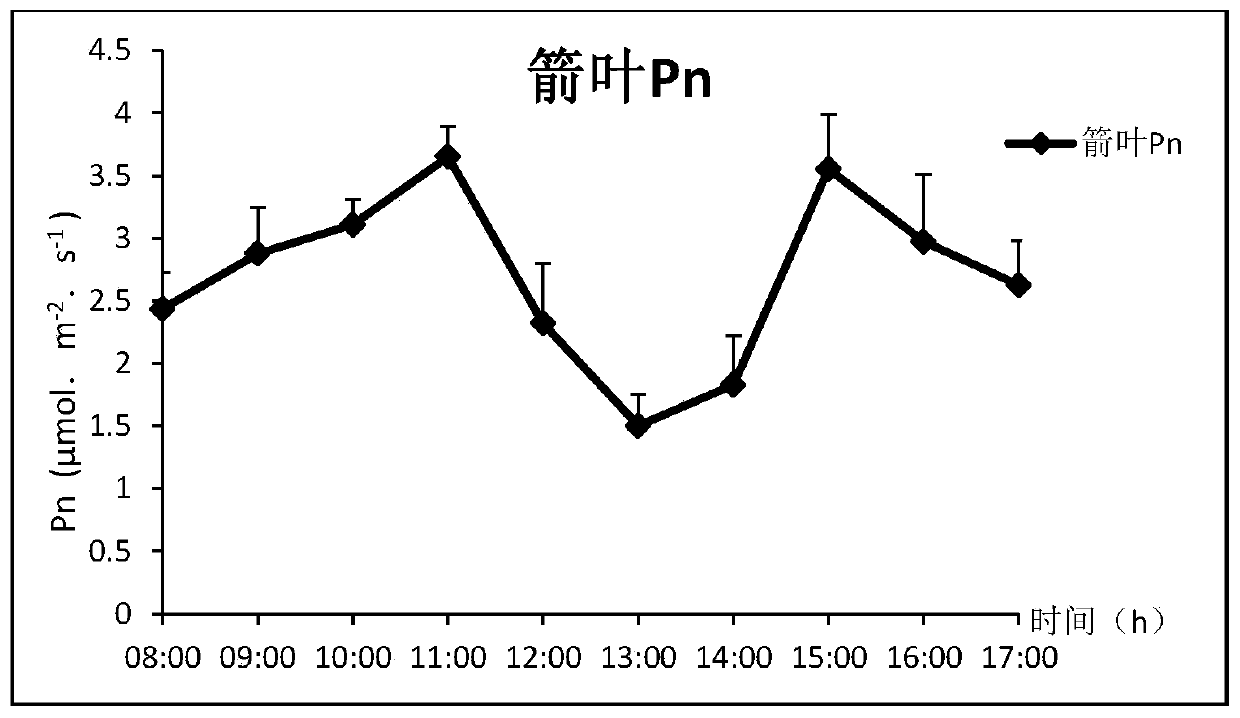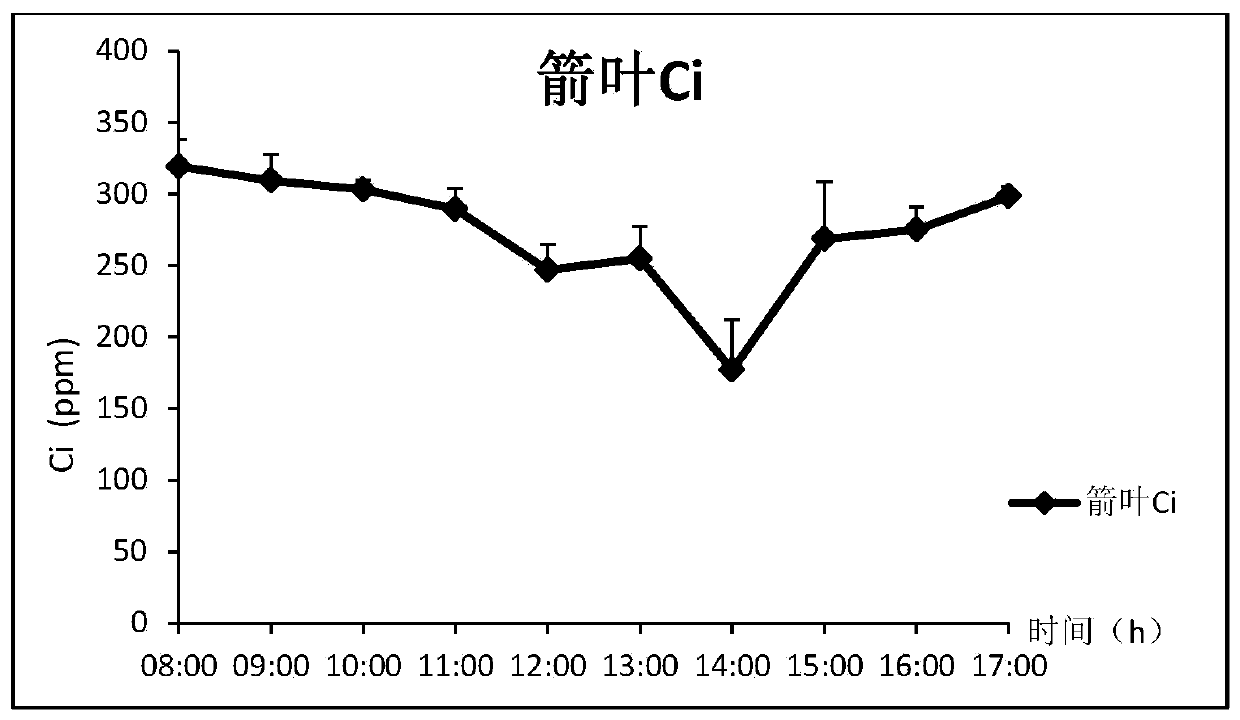High-yield planting method of epimedium sagittatum(sieb.etzucc.)maxim.
A technology for high-yield planting of Epimedium serrata, applied in the field of medicinal material planting, can solve the problems of long time consumption and low yield, and achieve the effects of good medicinal material quality, stable and controllable resources, and scientific and reasonable planting methods
- Summary
- Abstract
- Description
- Claims
- Application Information
AI Technical Summary
Problems solved by technology
Method used
Image
Examples
Embodiment 1
[0055] Example 1 Experimental Research on Photosynthesis of Epimedium Sagittarius
[0056] Use the seeds of Epimedium sagittatum (E. sagittatum) for large-scale cultivation (the plants are all identified by researcher Guo Baolin of the Institute of Medicinal Botany, Chinese Academy of Medical Sciences), sow seedlings from December to early February of the next year, and the third year Harvest in August.
[0057] The test site is located in Leishan County, southeast of Guizhou Province, with east longitude 107°55′~108°20′ and north latitude 26°02′~26°34′. The territory has a mid-subtropical monsoon humid climate. The average annual temperature in most areas is between 14°C and 15°C, the highest temperature is as high as 35.6°C, and the lowest temperature is as low as minus 8.9°C. The frost-free period is 240-250 days, the average annual precipitation is 1375mm, and the annual average sunshine is 1225h.
[0058] The test material is Epimedium sagittatum (E. sagittatum), the an...
Embodiment 2
[0079] The study of embodiment 2 light intensity on the growth and development of Epimedium
[0080] As experimental materials, the seedlings of Epimedium sagittarius that had completed the first year of healthy growth and uniform development in the Leishan planting base in Guizhou were transplanted into the greenhouse of the Institute of Medicinal Plants of Peking Union Medical College in 2013 and late December 2014 ( All plants were identified by researcher Guo Baolin, Institute of Medicinal Botany, Chinese Academy of Medical Sciences). After sterilizing the roots of Epimedium seedlings with 800-fold carbendazim solution, plant them individually in pots with a diameter of 10 cm and a height of 10 cm. The substrate is a mixture of peat soil and vermiculite at a ratio of 3:1. After about a month, the plants grow well after slowing down the seedlings. In February 2014 and 2015, plants with well-developed root system, healthy growth, and basically the same size and growth were ...
Embodiment 3
[0086] Embodiment 3 planting density experiment
[0087] From October 20, 2015 to July 22, 2017, a high-yield cultivation experiment of Epimedium was carried out in Wangfeng Township, Leishan County, to explore the optimum planting density for high-yield Epimedium sagitta.
[0088] The test adopts this technical method. In the same plot, the annual first-grade seedlings with soil were planted according to the row spacing of 15CM*15CM, 20CM*20CM, 15CM*20CM, 15CM*30CM, and 25CM*25CM. The test set 5 treatments, repeated 3 times, and randomized area Group arrangement.
[0089] During yield measurement, each treatment randomly selects 10m 2 Harvest the above-ground parts of healthy epimedium growing areas for yield measurement, first measure the fresh weight, and then measure the dry weight after drying.
[0090] Field random block design table:
[0091] Table 4 Field random block design table
[0092]
[0093] Table 5 Statistical table of output data of each treatment samp...
PUM
 Login to View More
Login to View More Abstract
Description
Claims
Application Information
 Login to View More
Login to View More - R&D
- Intellectual Property
- Life Sciences
- Materials
- Tech Scout
- Unparalleled Data Quality
- Higher Quality Content
- 60% Fewer Hallucinations
Browse by: Latest US Patents, China's latest patents, Technical Efficacy Thesaurus, Application Domain, Technology Topic, Popular Technical Reports.
© 2025 PatSnap. All rights reserved.Legal|Privacy policy|Modern Slavery Act Transparency Statement|Sitemap|About US| Contact US: help@patsnap.com



